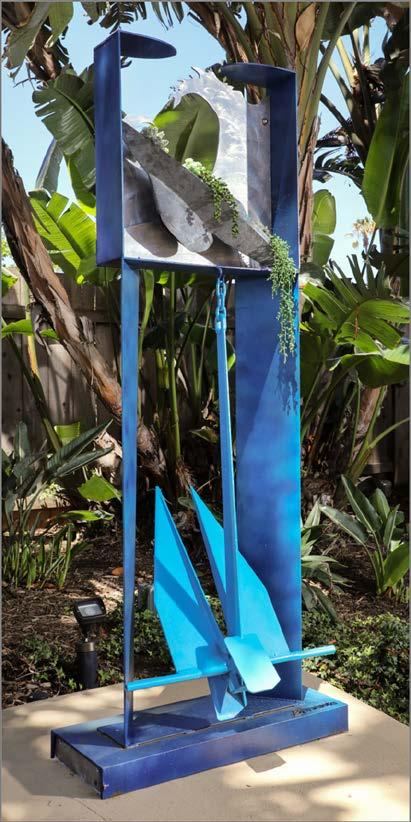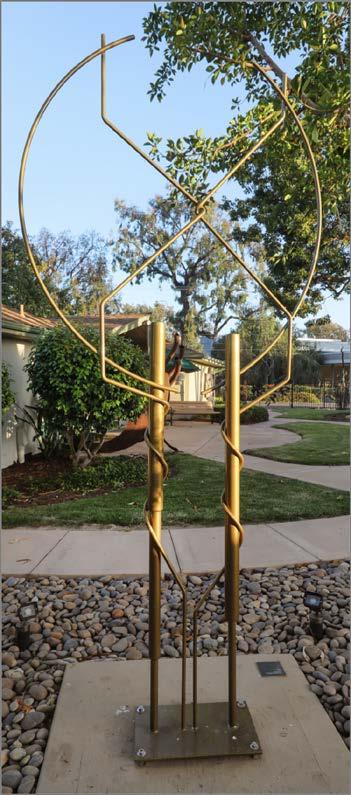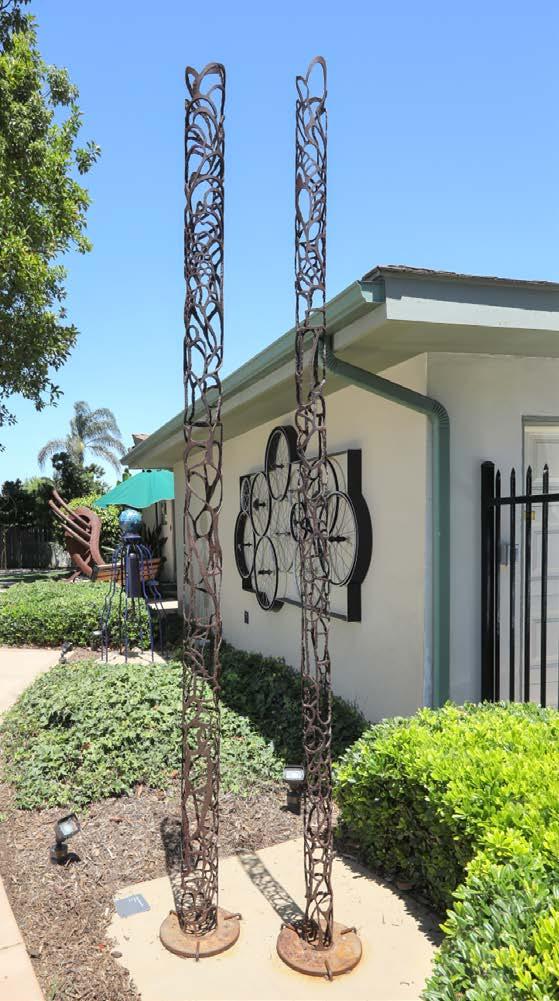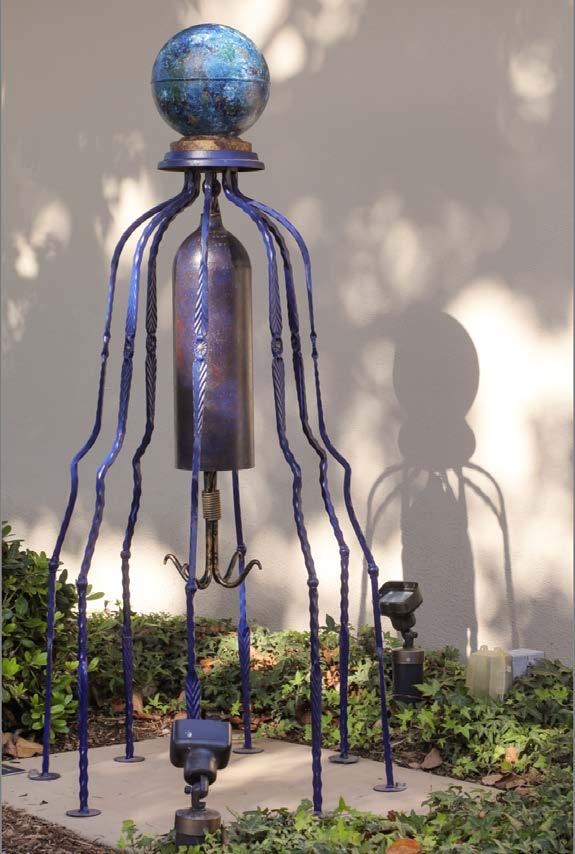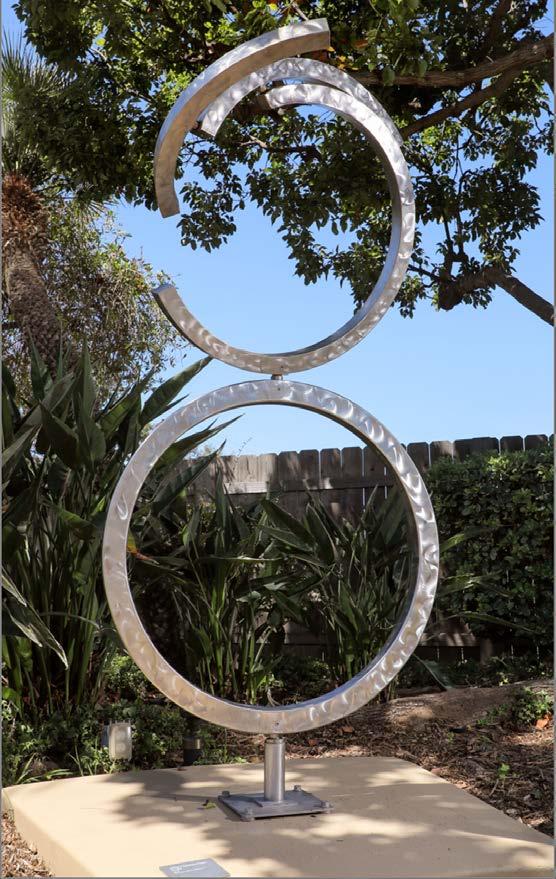
3 minute read
Art Terms
ABSTRACT ART: to separate or withdraw something from something else; the term can be applied to art that is based on an object, figure or landscape, where forms have been simplified or schematized and is also applied to art that uses forms, such as geometric shapes or gestural marks, which have no source at all in an external visual reality
BREAKAWAY: (in cycling): breakaway, or break in short, is when a small group of riders or an individual have successfully opened a gap ahead of the pack or group of riders
CONCEPTS: ideas, thoughts, schemata; art arising out of conceptual experimentation that emphasizes making meaning through ideas rather than through materiality or form
DESIGN: application of creativity to planning the optimal solution to a given problem and communication of that plan to others
DICHROIC GLASS: glass which displays one of two different colors depending on lighting conditions; one dichroic material is a modern composite non-translucent glass that is produced by stacking layers of glass and micro-layers of metals or oxides which give the glass shifting colors depending on the angle of view, causing an array of colors to be displayed as an example of thin-film optics
FOUND OBJECT: the use of man-made or natural objects not normally considered traditional art materials; found objects are transformed by changing meaning from their original context; the objects can be used singly or in combination (e.g., assemblage or installation)
GEOMETRIC SHAPES: shapes made out of points and lines including the triangle, square and circle
HELIOTROPE: a plant cultivated for its fragrant purple or blue flowers which are used in perfume
HELIX: a shape like a corkscrew or spiral staircase and is a type of smooth space curve with tangent lines at a constant angle to a fixed axis
KAKTOS: the word “cactus” is derived through Latin from the Ancient Greek κάκτος (kaktos), a name used by Theophrastus for a spiny plant, which may have been the cardoon
KINETIC ART: art that depends on motion for its effects and means relating to motion
LINE: a point moving in space where its length is greater than its width; lines can be two or three dimensional, implied or abstract and different types of lines include continuous, broken, jagged, vertical, horizontal or diagonal
MATERIALS: substances out of which art is made or composed, ranging from the traditional to “nonart” material and virtual, cybernetic and simulated materials
MEDIA: mode(s) of artistic expression or communication; material or other resources used for creating art
MONOCHROME: one color, so in relation to art, a monochrome artwork is one that includes only one color
ORGANIC SHAPES: irregular and imperfect shapes that are slightly different from one another; they are often curved and flowing and can seem unpredictable
PROPORTION: refers to the dimensions of a composition and relationships between height, width and depth
REFLECTION: act of reflecting, as in casting back a light or heat, mirroring, or giving back or showing an image; the state of being reflected in this way
SCALE: refers to the overall physical size of an artwork or objects in the artwork
SCION: a young shoot or twig from a plant, a descendant of a notable family
SCULPTURE: three-dimensional art made by one of four basic processes: carving, modelling, casting or constructing
SCULPTURE GARDEN: a sculpture garden or sculpture park is an outdoor garden dedicated to the presentation of sculpture, usually several permanently sited works in durable materials in landscaped surroundings
SEAFARER: a person who regularly travels by sea; a sailor
SHADOW: a dark area or shape produced by a body coming between rays of light and a surface
SUBJECT: refers to the main idea that is represented in the artwork
THEME: a broad idea or a message conveyed by a work of art
VISUAL ELEMENTS: stylistic features that are included within an art piece to help the artist communicate; the seven most common elements include line, shape, texture, form, space, color and value

